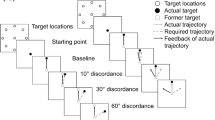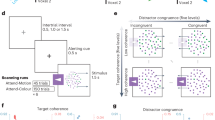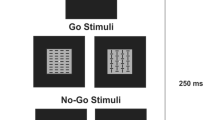Abstract
A complexity (orientation and shape of stimuli) in the mental rotation (MR) task often affects reaction time (RT) and response accuracy, but the nature of such reflections in neuroscientific research is commonly undocumented. A number of studies have explored the effect of complexity and subsequently noted down the differences in performance. However, a few studies explored complexity (in the term of angular disparity) and cognitive strategies with respect to correct responses only. In contrast, the present study investigated frontal alpha desynchronization with reference to the complexity and proportions of correct and incorrect responses. Behavioral and neurophysiological responses were investigated to understand the switching between strategies (Analytic vs. Holistic). Results showed longer response time with respect to increased complexity. Frontal alpha desynchronization increased for difficult trials and incorrect responses, suggesting a higher utilization of cognitive resources at the frontal region during the MR task. Higher left frontal desynchronization reflected a trading off between strategies for difficult trials. Taken together, these findings suggest that the effect of stimuli complexity is more nuanced than implied by a simple hemispheric dichotomy for frontal cortex and discuss possible future directions to better understand the multitudinous brain mechanisms involved in MR.







Similar content being viewed by others
References
Akiyama, M., Tero, A., Kawasaki, M., Nishiura, Y., & Yamaguchi, Y. (2017). Theta-alpha EEG phase distributions in the frontal area for dissociation of visual and auditory working memory. Scientific Reports, 7, 42776.
Boone, A. P., & Hegarty, M. (2017). Sex differences in mental rotation tasks: Not just in the mental rotation process! Journal of Experimental Psychology. Learning, Memory, and Cognition, 43(7), 1005.
Brzezicka, A., Kamiński, J., Kamińska, O. K., Wołyńczyk-Gmaj, D., & Sedek, G. (2017). Frontal EEG alpha band asymmetry as a predictor of reasoning deficiency in depressed people. Cognition and Emotion, 31(5), 868–878.
Chandra, S., Sharma, G., Sharma, M., Mittal, A. P., & Jha, D. (2016). Workload regulation by Sudarshan Kriya: an EEG and ECG perspective. Brain Informatics, 4, 1–13.
Chen, X., Bin, G., Daly, I., & Gao, X. (2013). Event-related desynchronization (ERD) in the alpha band during a hand mental rotation task. Neuroscience Letters, 541, 238–242.
Corballis, M. C. (1997). Mental rotation and the right hemisphere. Brain and Language, 57(1), 100–121.
Delacre, M., Lakens, D., & Leys, C. (2017). Why psychologists should by default use Welch’s t-test instead of Student’s t-test. International Review of Social Psychology, 30(1), 92–101.
Delorme, A., & Makeig, S. (2004). EEGLAB: An open source toolbox for analysis of single-trial EEG dynamics including independent component analysis. Journal of Neuroscience Methods, 134(1), 9–21.
Fink, A., & Benedek, M. (2014). EEG alpha power and creative ideation. Neuroscience and Biobehavioral Reviews, 44, 111–123.
Gardony, A. L., Eddy, M. D., Brunyé, T. T., & Taylor, H. A. (2017). Cognitive strategies in the mental rotation task revealed by EEG spectral power. Brain and Cognition, 118, 1–18.
Gogos, A., Gavrilescu, M., Davison, S., Searle, K., Adams, J., Rossell, S. L., et al. (2010). Greater superior than inferior parietal lobule activation with increasing rotation angle during mental rotation: An fMRI study. Neuropsychologia, 48(2), 529–535.
Harris, I. M., & Miniussi, C. (2003). Parietal lobe contribution to mental rotation demonstrated with rTMS. Journal of Cognitive Neuroscience, 15(3), 315–323.
Heil, M., & Jansen-Osmann, P. (2008). Sex differences in mental rotation with polygons of different complexity: Do men utilize holistic processes whereas women prefer piecemeal ones? The Quarterly Journal of Experimental Psychology, 61(5), 683–689. https://doi.org/10.1080/17470210701822967.
Horst, A. C., Lier, R., & Steenbergen, B. (2013). Mental rotation strategies reflected in event-related (de) synchronization of alpha and mu power. Psychophysiology, 50(9), 858–863.
Hugdahl, K., Thomsen, T., & Ersland, L. (2006). Sex differences in visuo-spatial processing: An fMRI study of mental rotation. Neuropsychologia, 44(9), 1575–1583.
Kasabov, N., & Capecci, E. (2015). Spiking neural network methodology for modelling, classification and understanding of EEG spatio-temporal data measuring cognitive processes. Information Sciences, 294, 565–575.
Kim, S., Jung, K. H., & Lee, J. H. (2012). Characteristics of alpha power event-related desynchronization in the discrimination of spontaneous deceptive responses. International Journal of Psychophysiology, 85(2), 230–235.
Klimesch, W. (1999). EEG alpha and theta oscillations reflect cognitive and memory performance: A review and analysis. Brain Research Reviews, 29(2), 169–195.
Klimesch, W. (2012). Alpha-band oscillations, attention, and controlled access to stored information. Trends in Cognitive Sciences, 16(12), 606–617.
Klimesch, W., Doppelmayr, M., & Hanslmayr, S. (2006). Upper alpha ERD and absolute power: Their meaning for memory performance. Progress in Brain Research, 159, 151–165.
Kolev, V., Yordanova, J., Basar-Eroglu, C., & Basar, E. (2002). Age effects on visual EEG responses reveal distinct frontal alpha networks. Clinical Neurophysiology, 113(6), 901–910.
Lawrence, L. M., Ciorciari, J., & Kyrios, M. (2014). Cognitive processes associated with compulsive buying behaviours and related EEG coherence. Psychiatry Research: Neuroimaging, 221(1), 97–103.
Li, S., Mayhew, S. D., & Kourtzi, Z. (2011). Learning shapes spatiotemporal brain patterns for flexible categorical decisions. Cerebral Cortex, 22(10), 2322–2335.
Neubauer, A. C., Bergner, S., & Schatz, M. (2010). Two- vs. three-dimensional presentation of mental rotation tasks: Sex differences and effects of training on performance and brain activation. Intelligence, 38(5), 529–539.
Neubauer, A. C., & Fink, A. (2009). Intelligence and neural efficiency. Neuroscience and Biobehavioral Reviews, 33(7), 1004–1023.
Neubauer, A. C., Fink, A., & Grabner, R. H. (2006). Sensitivity of alpha band ERD to individual differences in cognition. Progress in Brain Research, 159, 167–178.
Neubauer, A. C., Grabner, R. H., Freudenthaler, H. H., Beckmann, J. F., & Guthke, J. (2004). Intelligence and individual differences in becoming neurally efficient. Acta Psychologica, 116(1), 55–74.
Neuper, C., & Klimesch, W. (Eds.). (2006). Event-related dynamics of brain oscillations (Vol. 159). Amsterdam: Elsevier.
Parsons, T. D., Larson, P., Kratz, K., Thiebaux, M., Bluestein, B., Buckwalter, J. G., et al. (2004). Sex differences in mental rotation and spatial rotation in a virtual environment. Neuropsychologia, 42(4), 555–562.
Pfurtscheller, G. (1989). Spatiotemporal analysis of alpha frequency components with the ERD technique. Brain Topography, 2(1), 3–8.
Pfurtscheller, G. (1992). Event-related synchronization (ERS): an electrophysiological correlate of cortical areas at rest. Electroencephalography and Clinical Neurophysiology, 83(1), 62–69.
Pfurtscheller, G., & Aranibar, A. (1977). Event-related cortical desynchronization detected by power measurements of scalp EEG. Electroencephalography and Clinical Neurophysiology, 42, 817–826.
Riečanský, I., & Katina, S. (2010). Induced EEG alpha oscillations are related to mental rotation ability: The evidence for neural efficiency and serial processing. Neuroscience Letters, 482(2), 133–136.
Roberts, J. E., & Bell, M. A. (2000). Sex differences on a mental rotation task: Variations in electroencephalogram hemispheric activation between children and college students. Developmental Neuropsychology, 17(2), 199–223.
Rubia, K., Hyde, Z., Halari, R., Giampietro, V., & Smith, A. (2010). Effects of age and sex on developmental neural networks of visual–spatial attention allocation. NeuroImage, 51(2), 817–827.
Salenius, S., Kajola, M., Thompson, W. L., Kosslyn, S., & Hari, R. (1995). Reactivity of magnetic parieto-occipital alpha rhythm during visual imagery. Electroencephalography and Clinical Neurophysiology, 95(6), 453–462.
Sauseng, P., Klimesch, W., Doppelmayr, M., Pecherstorfer, T., Freunberger, R., & Hanslmayr, S. (2005). EEG alpha synchronization and functional coupling during top-down processing in a working memory task. Human Brain Mapping, 26(2), 148–155.
Sharma, G., Gramann, K., Chandra, S., Singh, V., & Mittal, A. P. (2017). Brain connectivity during encoding and retrieval of spatial information: Individual differences in navigation skills. Brain Informatics, 4(3), 207.
Sharma, G., Salam, A. A., Chandra, S., Singh, V., & Mittal, A. (2016, October). Influence of spatial learning perspectives on navigation through virtual reality environment. Paper presented at the International Conference on Brain and Health Informatics (pp. 346-354). Springer International Publishing.
Shepard, R. N., & Cooper, L. A. (1982). Mental images and their transformations. Cambridge: MIT Press.
Shepard, R. N., & Metzler, J. (1971). Mental rotation of three-dimensional objects. Science, 171(3972), 701–703.
Shepard, S., & Metzler, D. (1988). Mental rotation: Effects of dimensionality of objects and type of task. Journal of Experimental Psychology: Human Perception and Performance, 14(1), 3.
So, W. K., Wong, S. W., Mak, J. N., & Chan, R. H. (2017). An evaluation of mental workload with frontal EEG. PLoS ONE, 12(4), e0174949.
Tomasino, B., & Gremese, M. (2016). Effects of stimulus type and strategy on mental rotation network: An activation likelihood estimation meta-analysis. Frontiers in Human Neuroscience, 9, 693.
Tomasino, B., & Rumiati, R. I. (2004). Effects of strategies on mental rotation and hemispheric lateralization: Neuropsychological evidence. Journal of Cognitive Neuroscience, 16(5), 878–888.
van Hoogmoed, A. H., van den Brink, D., & Janzen, G. (2012). Electrophysiological correlates of object location and object identity processing in spatial scenes. PLoS ONE, 7(7), e41180.
Williams, J. D., Rippon, G., Stone, B. M., & Annett, J. (1995). Psychophysiological correlates of dynamic imagery. British Journal of Psychology, 86(2), 283–300.
Xue, J., Li, C., Quan, C., Lu, Y., Yue, J., & Zhang, C. (2017). Uncovering the cognitive processes underlying mental rotation: an eye-movement study. Scientific Reports, 7(1), 10076.
Acknowledgements
This study was supported by Director, INMAS, DRDO, Delhi. The EEG data acquired by Nidhi Gupta and Shweta Saraswat. Scales used for this study were designed through the support of Delhi University.
Author information
Authors and Affiliations
Corresponding author
Ethics declarations
Ethical Approval
All procedures performed in studies involving human participants were in accordance with the ethical standards of the INMAS ethical committee and with the 1964 Helsinki declaration and its later amendments or comparable ethical standards. Informed consent was obtained from all individual participants included in the study.
Additional information
Publisher's Note
Springer Nature remains neutral with regard to jurisdictional claims in published maps and institutional affiliations.
Rights and permissions
About this article
Cite this article
Sharma, G., Daniel, R., Chandra, S. et al. Effect of Complexity on Frontal Event Related Desynchronisation in Mental Rotation Task. Appl Psychophysiol Biofeedback 44, 235–245 (2019). https://doi.org/10.1007/s10484-019-09436-0
Published:
Issue Date:
DOI: https://doi.org/10.1007/s10484-019-09436-0




